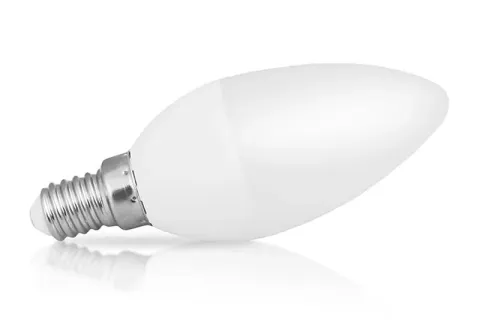If the heat dissipation design of LED lamps is poor, the high temperature of LED chips will accelerate their aging. High temperature will cause electron migration inside the chip, which will reduce its luminous efficiency and eventually lead to brightness decay.
When choosing LED lighting fixtures, consumers should focus on lumens rather than watts. Lumens more directly reflect the brightness of the lamp, while watts are mainly used to reflect the energy consumption of the lamp. Understanding the difference between the two can help consumers make more appropriate purchasing decisions.
According to the principles of physics, the greater the current, the more times the electrons and holes in the LED recombine, and the more light energy is generated, so the LED will appear brighter. For standard LED bulbs or LED panel lights, the relationship between brightness and current is usually linear - that is, the current increases, the brightness increases.
If the lamp uses LED lamps with strong ultraviolet emission, or white and blue LED lamps, it may attract more insects, especially at night or in summer. On the contrary, if the lamp uses red light or warm white light, such lamps will be less attractive and the probability of insects gathering is relatively low.
Although the LED chip itself requires direct current to work properly, most home and commercial power systems provide alternating current. Therefore, when the LED lighting downlight is working, it needs to convert the alternating current into direct current through a power driver module.
LED itself is a point light source with strong divergence of light. In LED spotlights, through reasonable optical design and the role of lens or reflector, the propagation direction of light can be changed and the divergence of light can be reduced, thereby focusing the light beam to a specific area.
Assuming that the wattage of each LED downlight is 10 watts, the number of lamps required is: For a demand of 66.7 watts, the number of lamps required is approximately: 66.7W divided by 10W = 6.7. That is, about 7 10-watt LED downlights are required. For a demand of 111.1 watts, the number of lamps required is approximately: 111.1W divided by 10W = 11.1. That is, about 11 10-watt LED downlights are required.
"Surface-mounted" refers to the installation method of the lamp, that is, the lamp is directly exposed on the ceiling or wall surface, instead of requiring reserved space or embedded in the wall like recessed lamps. A surface-mounted LED downlight is a lighting fixture with a circular cylindrical shape and an LED light source.
If the output signal of the dimmer is unstable or not suitable for LED panel lights, it may cause the lamp to flicker. Frequent flickering will not only affect the user experience, but may also cause a load on the internal circuit of the lamp and shorten its service life.
When making the final decision, users should consider their specific needs. If it is mainly used for daily makeup, warm light may be more suitable; if fine eye makeup and eyebrow shaping are required, cool light may better meet the needs. Environmental factors will also influence the choice.
If you want the light in the bedroom to be softer and more uniform, and provide a comfortable sleeping environment, LED downlights are undoubtedly a more suitable choice. If you need to highlight certain decorative details or local areas in the bedroom, LED spotlights can provide more precise lighting.
Lumens are not directly equivalent to the intensity of lighting, but rather a measure of the amount of light emitted by a light source. In simple terms, lumens describe how much light a light source "emitted", but do not necessarily reflect the "brightness" of the light.












